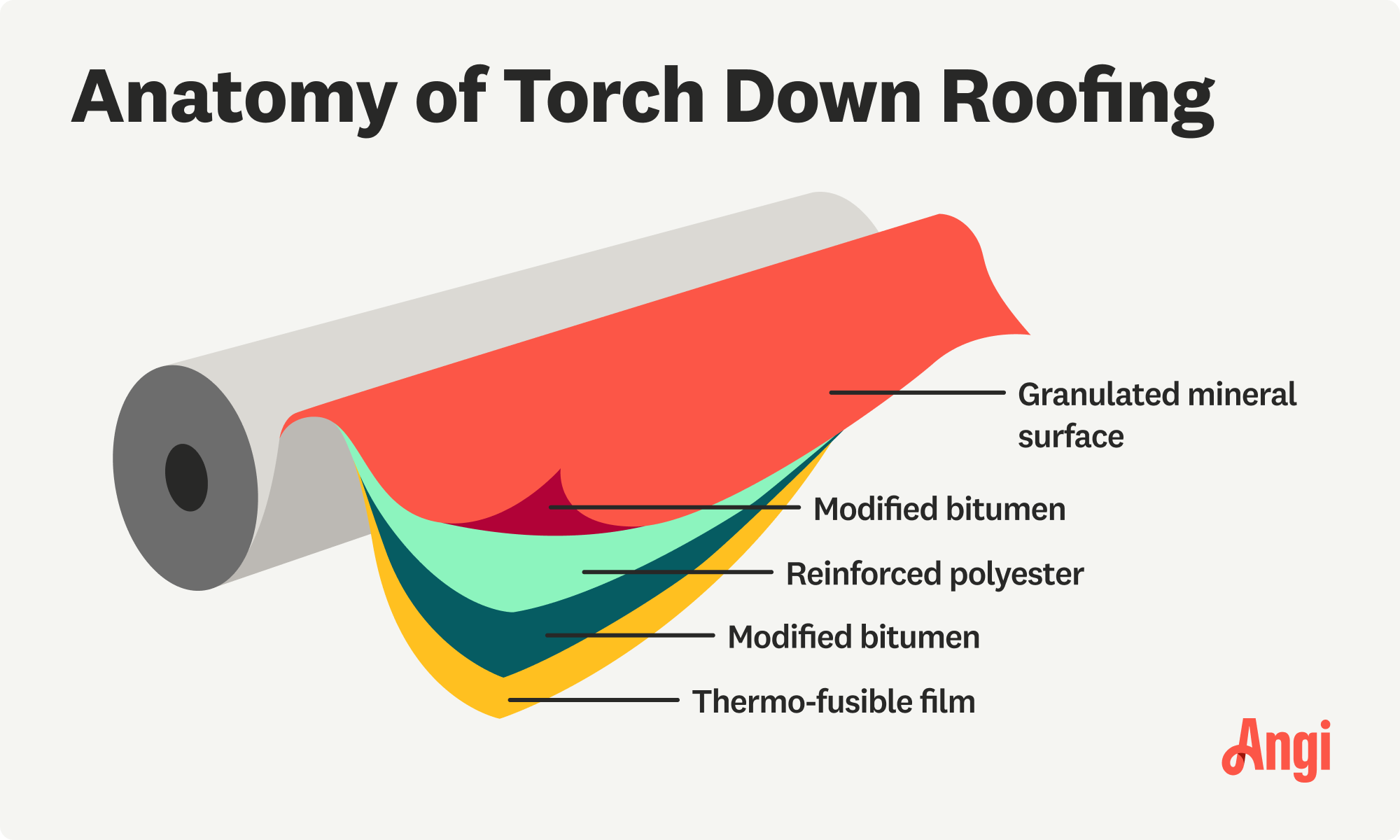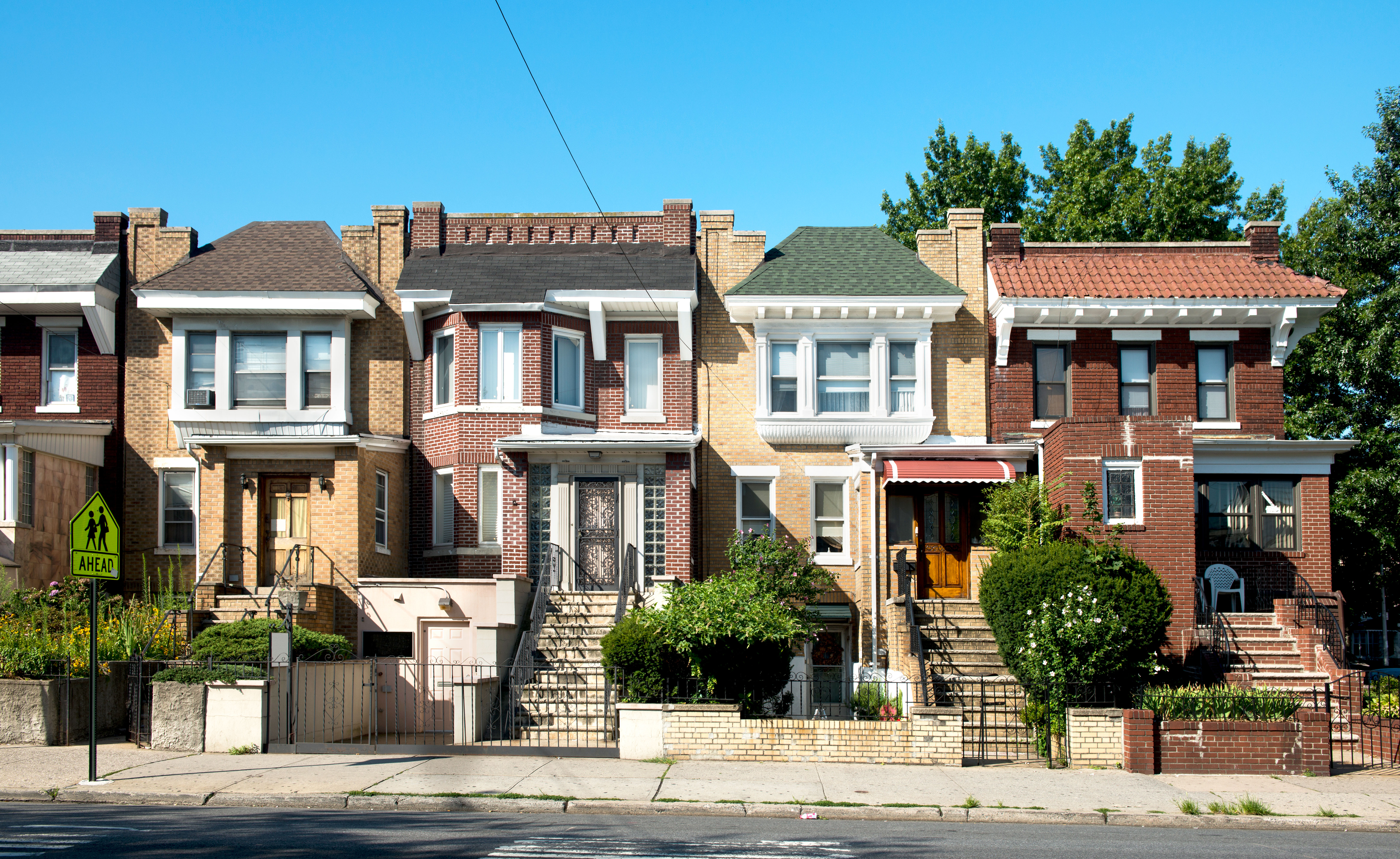
Need a new roof in the city that never sleeps? Learn about metal roof costs in New York to see if this durable roofing material is within your budget.
The average torch down roofing cost is $12,250, but the price ranges from $3,500 to $17,500, depending on the type of material, number of layers, and size of your roof.


The size of your roof is the most influential cost factor to consider, as roofing contractors quote based largely on square footage.
Consider the type of material you use carefully. SBS-modified bitumen is 7% to 8% less expensive than APP-modified bitumen, but each works better in certain climates.
Take ongoing roof resealing into account to avoid surprise costs down the road.
Torch down roofing is simple and affordable to repair, so consider roof repair over replacement if your roof isn’t nearing the end of its life.
If your roof is flat or has a minimal slope, you might choose to go with torch down roofing. The total torch down roofing cost falls between $3,500 and $17,500, with most homeowners paying about $12,250. Let’s break down the cost of torch down roofing to help you better calculate your total project budget. Remember that a professional roofer in your area will always be able to give you the most accurate estimate.
The main components of a torch down roofing job are materials and labor, which come out to $3.5 to $7 per square foot. The torch down roofing cost breakdown for most projects is 40% for the materials and 60% for the labor. Keep in mind that prices are regionally determined and are affected by a range of factors, including the following.
Knowing your roof size is an easy way to get an approximate cost for your torch down roofing installation. Since your roof is likely flat or, at most, just slightly sloped, you can estimate its square footage by multiplying the length and width of your home.
| Roof Size (sq. ft.) | Total Cost |
|---|---|
| 1,000 | $3,500–$7,000 |
| 1,500 | $5,250–$10,500 |
| 2,000 | $7,000–$14,000 |
| 2,500 | $8,750–$17,500 |
| 3,000 | $10,500–$21,000 |
Professional roofers often put 40% to 50% of the project cost toward their labor fees. While most of the prices involved with your torch down roof installation will be part of the cost estimate you receive from your local roofing company, it can be helpful to understand where some of the money is going.
Existing roof demolition and disposal costs: $1 – $5 per square foot
Installing flashing costs: $200 – $500
If your general contractor is remodeling your existing home, installing an addition with a flat roof, or building you a new home, the company can likely handle the roofing needs as well. Like a roofing company, general contractors charge between 40% and 50% of the project cost to cover labor, overhead, and profit.
If your roof is undergoing reconstruction, now is a good time to consider hiring other specialists to handle other items on your roofing to-do list.
Chimney repair costs: $160 – $750
Skylight repair costs: $1,000 – $2,770
While the size of your roof is the most prominent pricing factor for torch down roofing, there are a few other cost factors to consider.

A two-layer torch down roof will cost slightly less than a three-layer torch down roof; however, it will not last as long—closer to 15 years, compared to a three-layer roof’s 20- to 25-year life span. You can expect to pay $3.50 to $6.50 per square foot for a two-layer roof, while a three-layer roof costs $4 to $7 per square foot.
| Number of Roof Layers | Price Range (per Square Foot) |
|---|---|
| 2 | $3.50 – $6.50 |
| 3 | $4 – $7 |
The two materials that you can choose from are SBS-modified bitumen and APP-modified bitumen. They are fairly comparable in price, though they can sway the total torch down roofing cost on larger buildings.
SBS stands for styrene-butadiene-styrene, which is a synthetic rubber. This material is more flexible than APP-modified bitumen and requires two layers: a base layer and a granulated cap sheet layer, which offers UV protection.
SBS-modified bitumen roofs are durable against extreme weather and impacts, and are also energy efficient. And while installers typically use the torch down method for SBS-modified bitumen, you can also choose between cold adhesive or self-adhesive applications.
Roofs with SBS-modified bitumen cost $3.50 to $6.50 per square foot.
APP stands for atactic polypropylene, which is a type of polymer. Therefore, this material is plastic-modified rather than rubber-modified and has an asphalt base. This makes for a more rigid roof compared to SBS-modified bitumen, and the installation process requires three layers.
APP-modified bitumen roofs can withstand extreme weather changes and offer great durability; however, it is not an ideal option for areas that are consistently below 25 degrees Fahrenheit. The installation process for this material is almost always the torch down method. This option costs $4 to $7 per square foot.
| Material Type | Price Range (Per sq. ft.) |
|---|---|
| SBS-modified bitumen | $3.50–$6.50 |
| APP-modified bitumen | $4–$7 |
You likely already have a roof on top of your house, and that roof will need to go before installing your new roof. The cost to remove an existing roof is around $1,000 to $1,500.
Roofing contractors often offer warranty deals in case something happens to your roof. This additional and optional expense can cost anywhere from $500 to $2,000.
Depending on your local municipality, you will need to pay between $100 and $1,000 for a permit to build a new roof.
Demand is higher and more costly for roof installations in the fall and slower in the winter, so know when the best time to install a roof is for your area.
Depending on your region, demand for torch roofs may be lower and, therefore, could cost you $1 to $2 more per square foot than an area with higher demand.
While all roofs should be installed by pros for safety reasons, torch down roofing requires an open flame during installation, adding a new dimension of danger. Hire a roofer near you who specializes in torch down roofing so you can rest assured that the project will be done safely and properly.
When you hire a pro to install your new torch down roofing, you’ll enjoy these benefits:
You’ll get expert advice on choosing between SBS-modified bitumen or APP-modified bitumen based on your climate.
Your roofer will conduct inspections and identify prep work that needs to be done, like roof deck repair.
They’ll remove and dispose of your old roof.
Material and workmanship warranties will ensure that issues that arise will be taken care of.
Expert installers will make sure the torch down roofing is properly and safely installed to prevent leaks and mold growth.
Work will be performed in accordance with local codes and regulations, ensuring you pass inspections and enjoy a long-lasting roof.
If you have a torch down roof that's in decent shape and not beyond 70% of its expected life span, you should consider repairing it instead of replacing it.
| Repair | Replace |
|---|---|
| Costs less than replacement | Costs more than repairing in most cases |
| Is a possibility if more than 30% of the life span still exists | Is the best option if the roof's life expectancy is nearly up |
| May require additional repair work later | Will likely be a while before repairs are necessary |
| May not allow the same warranty protections | Generally comes with significant warranty protections |
There are several ways to reduce the cost of installing a torch down roof.
Consider going with a two-layer roof rather than a three-layer roof.
Hire your contractor to perform the installation during off-peak seasons, such as early spring, late fall, or winter if possible.
Ask your contractor about discounts for using in-stock materials instead of custom or more expensive options.
Installing a new roof on your home will help it hold its value. Houses with flat roofs can choose between a couple of flat-roof material options. Torch down roofing works well in almost any climate and has a long life span compared to several other material types. However, the return on investment (ROI) that homeowners can realize likely depends on location and the local housing market. Typical ROI's for torch down roofing hover around 60% of the roof's cost.
Be prepared to discuss the materials you want to use for your torch-down roofing, as well as the number of layers you would like to have installed.
Find out which warranties are available for materials and workmanship.
If your roof has a history of issues, like water leaks, have the records on hand to share with your roofer.
Ask if you should anticipate additional costs for necessary services, such as demolition and disposal.
Home is the most important place on earth, which is why Angi has helped more than 150 million homeowners transform their houses into homes they adore. To help homeowners with their next project, Angi provides readers with the most accurate cost data and upholds strict editorial standards. We extensively research project costs to develop the pricing data you see, so you can make the best decisions for you and your home. We rely on reputable sources, including the U.S. Bureau of Labor Statistics, academic journals, market studies, and interviews with industry experts—all to ensure our prices reflect real-world projects.
Want to help us improve our cost data? Send us a recent project quote to [email protected]. Quotes and personal information will not be shared publicly.
From average costs to expert advice, get all the answers you need to get your job done.

Need a new roof in the city that never sleeps? Learn about metal roof costs in New York to see if this durable roofing material is within your budget.

Learn about average roof repair costs in New York City and what factors can affect your total to set your budget appropriately.

A new roof boosts curb appeal and home value and keeps your property protected. Learn about roof replacement costs in New York City to budget accurately.

If you’re upgrading your roof with stone-coated steel, you should be aware of the total project cost. Learn what will impact your final stone-coated steel roofing costs.

Furring strips support your metal roof and improve ventilation, but only if spaced correctly. Here’s the ideal spacing of furring strips for metal roofs.

Homeowners can fill a gap between their roof and wall with sealant or wire mesh. Here are three steps to help you get the project done safely.